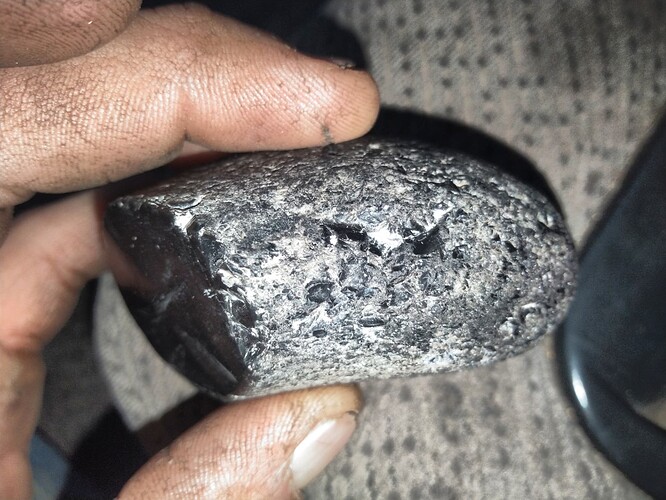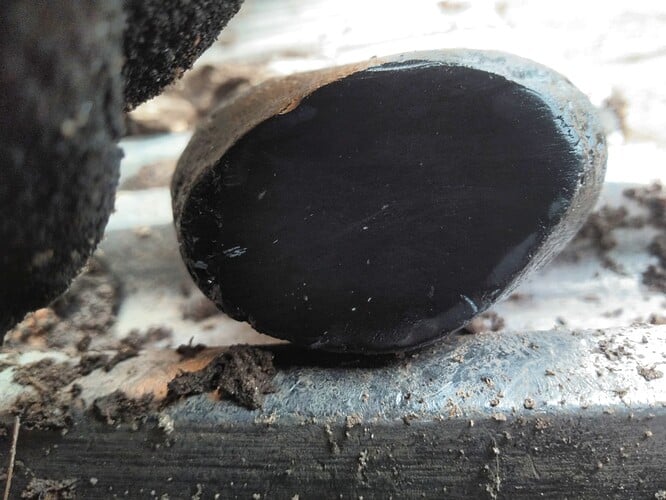Found this stone alone Boise river in Idaho. At first I thought it was obsidian but when I cutt a piece of I polished a bit and I could see my reflection and bands or pointed layers . Knowing u can’t see reflection in obsidian because it’s glass, is there a way to check if agate or onyx.? The cutt side is dull kinda waxy I guess, with a few white speckled inside. The chipped side is glass shinny like obsidian. I haven’t had time to do tests at home but it seems to be heavy for size. Thanks for input.
I don’t know why you rejected the idea of it being obsidian. I’ve seen my reflection in polished faces of obsidian. The bands you mention are common, too, e.g., in silver sheen obsidian. But for me the final bit of proof was the interior face where you chipped off part of the stone. The curved grain is typical of obsidian.
And finally, there’s a LOT of obsidian in Idaho. You didn’t say specifically what part you found it in, but it doesn’t much matter. It’s all over—eastern Idaho, near Craters of the Moon, western Idaho, near the Oregon border.
I’d vote for obsidian. (But what do I know? I’ve only been wrong about 100,000 times in my life! 
The fracture on the outside is called “concoidal fracture” which is certainly consistent with obsidian.
The distinction between obsidian and onyx/agate will be that obsidian will be rapidly cooled volcanic melt whereas onyx/agate forms by hydrothermal activity and grow within vugs or cavities from water based fluids. So the difference will be textural.
Obsidian will be essentially glass and will be isotropic (black under cross polarisation). It could have crystals within it from being held in deeper magma changes (sandine for example). Agates by contrast will show growth patterns of fine crystals usually quartz growing in bands and this will not be isotropic. So the best way to see these textural difference would be a petrographic examination with a thin section.
Obsidian could definitely have some patchiness. Being a glass it can devitrify. It will typically have a couple to a few percent volatiles as well - so that could cause alteration.
Hope that helps.
Neil - Geologist.
I will have to agree with BillDS6024
Thank you all, I mistyped what I meant. What I wanted to say was knowing you could see reflection in obsidian if you could with agate or onyx. That’s my bad on being in a hurry. I apologize for inconvenience, I am on other hand going to take a thin slice off and will post when accomplished. Thank you for your information.





